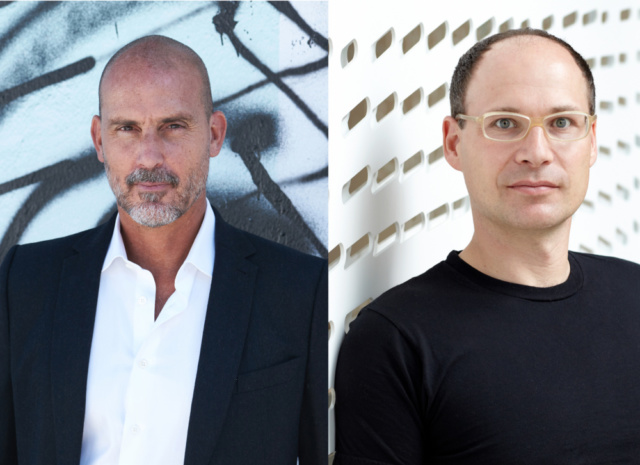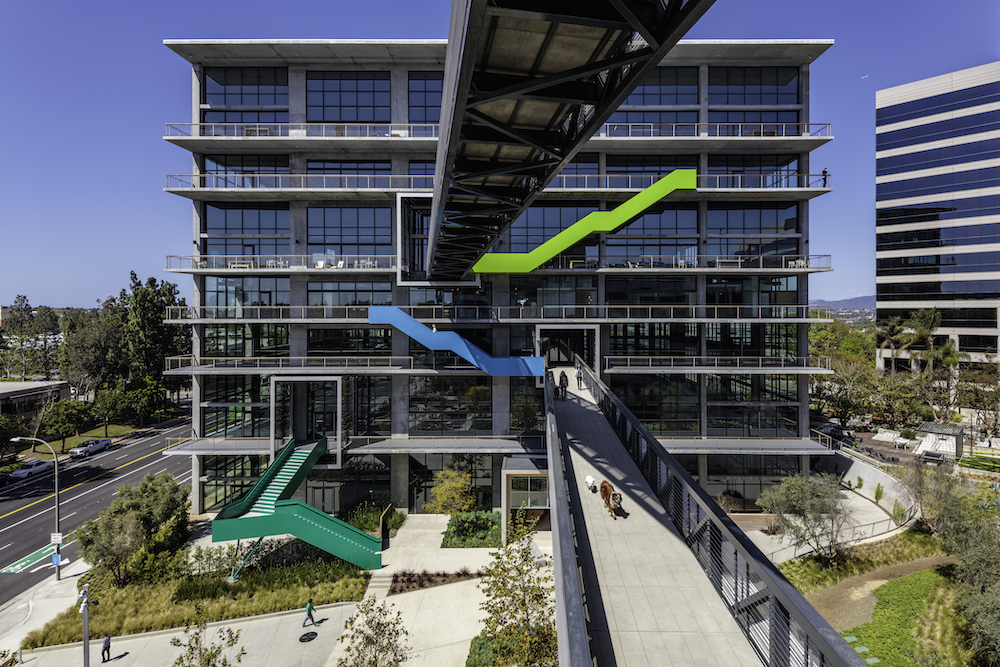
From November 14 to 15, Facades+ LA will bring regional, national, and international leaders of the AEC industry to Southern California for the fifth year in a row. Hosted by The Architect’s Newspaper and co-chaired by Gensler’s local office, the conference is split between a full-day symposium and a second day of hands-on workshops.
Conference keynotes include MVRDV principal Fokke Moerel and Rojkind Arquitectos principal Michel Rojkind. Other participants at the conference symposium and workshops will include Access Industries, Belzberg Architects, Christopher Hawthorne, CO Architects, FreelandBuck, Front, Gensler, Griffin Enright Architects, Grupo Anima Mexico, HGA, John Fidler Preservation Technologies, Morphosis, Neme Design Studio USA, Omgivning, PATTERNS, RDH, Rios Clementi Hale Studios, Walter P Moore, Trammell Crow, Sasaki, Shubin Donaldson Architects, Spectra Company, Studio NYL, WJE, and Zahner.
In this interview with The Architect’s Newspaper, Gensler principals and conference co-chairs Michael Volk and Olivier Sommerhalder discussed their firm’s recent work and the architectural trends reshaping Los Angeles.
AN: Gensler is the largest architectural and design practice in the world. How does this breadth of scale impact design at the regional level?
Michael Volk & Olivier Sommerhalder: As an integral part of our firm’s philosophy, our 50 global offices practice as though we are one firm, and we have set up our infrastructure to fluidly support this behavior. We bring our global knowledge and a very deep bench to bear on every endeavor, from large scale international work to regional and local projects. Our dimension is such that it allows us to have in-house expertise in many relevant disciplines, including facade experts, and we bring this capability to the table wherever needed, at any time, making us nimble and innovative designers who add value to our client’s projects.
What exciting projects is the Los Angeles office up to, and are you demonstrating any concepts tested at your research institute?
In our Los Angeles office, as in all our offices, we are extending our thinking on building design to the scale of shaping the future of cities. At the forefront of this is a design that addresses energy, climate, and housing concerns. Like many things in design, we are finding, however, that low tech and simple solutions are most impactful and meaningful in addressing these issues. Projects such as our office building C3 in Culver City and upcoming projects now on the table for mixed-use and residential high rises downtown and in the Hollywood area are returning to simple passive solar and ventilation techniques, as well as significant integration of public and private green space, to reconsider the “First Principles” of their typologies. Living with nature and consuming less energy and water, while at the same time being in closer proximity to intellectual, economic and recreational capital, are among the positive aspects of urban life research shows to be most valuable and sustaining.

Los Angeles is in a certain sense maturing as a city. What do you perceive to be the most interesting trends within the region today?
Los Angeles is indeed maturing, and at the same time it’s dimension and urban condition make it an ideal city to be a testing ground for new urban innovations. Housing, density, and mobility are the leading topics, alongside climate change and energy considerations. These topics are often seen hand in hand leading to development in the city. For example, with the expansion of Metro-rail corridors, mixed-use and higher density projects are naturally emerging, bringing with them an integrated, urban lifestyle of live/work/play within a short radius that is somewhat new to Southern California. As another example, long-standing neighborhoods now connected by mixed-use corridors and transportation, are evolving into multi-faceted hubs, rather than the single-use bedroom communities they traditionally have been. This has had the consequence of shrinking the typical radius of commuting and the positive synergistic effect of an organic mix of programs supporting a vibrant daily life, increasing economic and cultural offerings within a denser fabric.
Another surprising observation that may seem counter-intuitive considering Southern California’s envied climate: Over the past few years Los Angeles’ built environment seems to have rediscovered the connection to the outdoors. The mainstream has adopted outdoor patios for restaurants, the workplace has begun an extension of the workspace to the outdoors, and new apartment buildings and condominiums have generous balconies and roof terraces. This once-forgotten, but obvious, benefit is having a big impact on the design of buildings, envelopes, and landscapes.

Which materials do you believe are changing facade practices in terms of design and performance?
The most exciting material, surprisingly, is landscape.
Projects like Second Home in Hollywood by Selgascano, and our projects for One Westside, Epic in Hollywood and several mixed-use and residential high-rises we are currently working on in the city are (re) introducing landscape as a major building and space-defining element. The notion of biophilia as a driving conceptual element has emerged internationally in the last years in places like Europe, South East Asia and significantly in Singapore. Now, in Los Angeles, we are beginning to see this design thinking taking place. Landscape as a design element is now becoming foreground – as it can and should in our climate, not just background as it often has been.
More conventionally, timber and wood are also emerging on the horizon, not only as a primary structure but also as an envelope. Our project for the Headquarters of the company Alexandria in Pasadena includes a unitized curtainwall made of white oak with a second skin of wooden sunscreens.
Further information regarding Facades+ Los Angeles can be found here.




